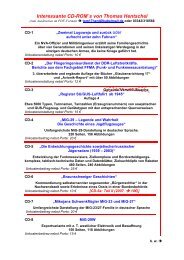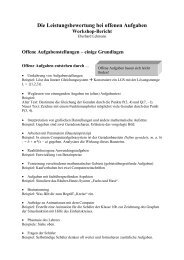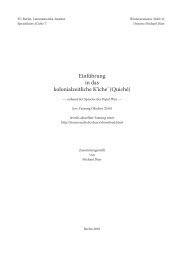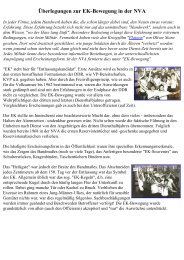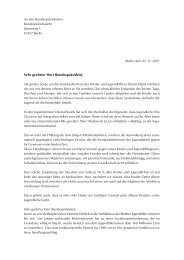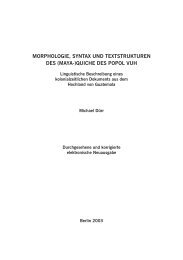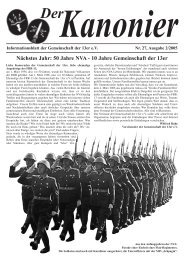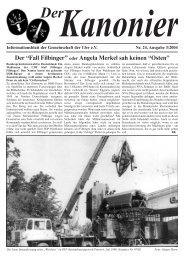SHADOW BOXING: INDONESIAN WRITERS ... - home . snafu . de
SHADOW BOXING: INDONESIAN WRITERS ... - home . snafu . de
SHADOW BOXING: INDONESIAN WRITERS ... - home . snafu . de
You also want an ePaper? Increase the reach of your titles
YUMPU automatically turns print PDFs into web optimized ePapers that Google loves.
166 Marshall Clark<br />
most effective ways to salvage a sense of social or political relevancy from the literary<br />
life of the New Or<strong>de</strong>r, and the late New Or<strong>de</strong>r in particular, is to focus on these<br />
writers and their "Aesopian" reworkings of the wayang world.<br />
Some of the most memorable scholarship to examine the social and political<br />
dimensions of mo<strong>de</strong>rn Indonesian literature during the New Or<strong>de</strong>r discusses writers<br />
who heavily draw upon the wayang tradition in the creation of their literary works. For<br />
example, Michael Bod<strong>de</strong>n's analysis of Teater Koma's Suksesi (Succession) and Y. B.<br />
Mangunwiya's Durga Umayi, two works which appeared in 1989 and 1995<br />
respectively, explores in <strong>de</strong>tail how these texts appropriate and subvert the wayang<br />
tradition while simultaneously challenging the foundations of the New Or<strong>de</strong>r's<br />
authority. 32 Elsewhere, Keith Foulcher comments on the role of wayang and tradition in<br />
the fiction of leading New Or<strong>de</strong>r writers such as Danarto, Putu Wijaya, and Leila<br />
Chudori, suggesting that their literary expression is relevant to contemporary Indonesia<br />
and its cultural <strong>de</strong>velopment. 33 In a study written in the early 1990s, Barbara Hatley<br />
argues that from the 1970s onwards much of Indonesia's cultural expression was<br />
characterized by a vigorous reinterpretation of regional cultural traditions such as the<br />
wayang, re interpretations which also inclu<strong>de</strong>d important critical reflections on<br />
contemporary Indonesian society. 34 In a later study of mo<strong>de</strong>rn theatre in the New<br />
Or<strong>de</strong>r era, Hatley goes one step further to spell out the key sociopolitical role and<br />
aesthetic characteristics of the synthesis between traditional Javanese cultural<br />
expression and mo<strong>de</strong>rn performance art:<br />
Absence of alternate channels of political expression arguably directed attention<br />
to performance as a site of socio-political critique. And the intimate audience<br />
connection and i<strong>de</strong>ological influence of traditional, regional forms of theatre<br />
ma<strong>de</strong> them attractive mo<strong>de</strong>ls to follow. Theatre groups adopted the idioms of<br />
local theatre genres, but often in a satirical mo<strong>de</strong> which challenged and contested<br />
their standard social meanings. Subversive renditions of traditional legends and<br />
comic caricatures of kings and courtiers un<strong>de</strong>rmined the discourse of<br />
contemporary power hol<strong>de</strong>rs, seeking self-aggrandisement through association<br />
with a glorified "Javanese tradition." 35<br />
In contrast to Maier's over-the-top pessimism, Hatley's optimistic comments could be<br />
taken as evi<strong>de</strong>nce that the repressive character of the New Or<strong>de</strong>r regime also spurred<br />
the creativity of a significant number of Indonesia's artists, at least in terms of<br />
directing their creative energy, and un<strong>de</strong>niably oppositional ten<strong>de</strong>ncies, to the<br />
extremely subversive potential of traditional cultural forms. In a sense, Hatley's<br />
Or<strong>de</strong>r Indonesian Theatre/' in Culture and Society in New Or<strong>de</strong>r Indonesia, ed. Virginia Matheson Hooker<br />
(Kuala Lumpur: Oxford University Press, 1995), pp. 49-50.<br />
32 Bod<strong>de</strong>n, 'Teater Koma's Suksesi"; Michael H. Bod<strong>de</strong>n, "Woman as Nation in Mangunwijaya's Durga<br />
Umayi/' Indonesia 62 (October 1996): 53-82. Y. B. Mangunwijaya, Durga Umayi (Jakarta: Pustaka Utama<br />
Grafiti, 1991).<br />
33 Keith Foulcher, "Postmo<strong>de</strong>rnism or the Question of History: Some Trends in Indonesian Fiction since<br />
1965," in Culture and Society in New Or<strong>de</strong>r Indonesia, pp. 27-47.<br />
34 Barbara Hatley, "Constructions of Tradition/" pp. 48-69.<br />
35 Barbara Hatley, "Cultural Expression and Social Transformation in Indonesia," in Reformasi: Crisis<br />
and Change in Indonesia, ed. Arief Budiman, Barbara Hatley and Damien Kingsbury (Clayton: Monash Asia<br />
Institute, 1999), pp. 268-269.


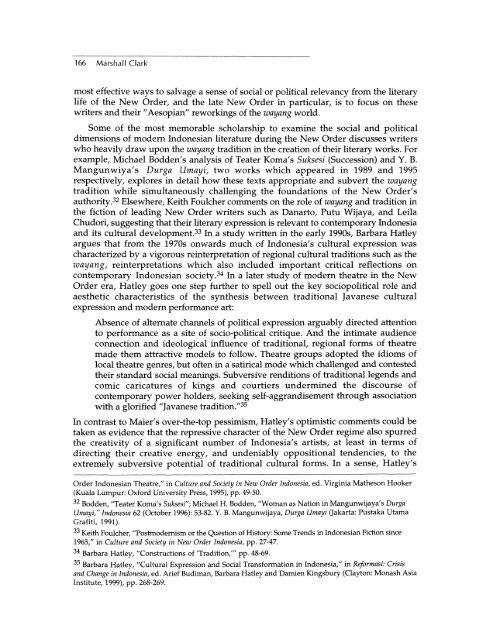
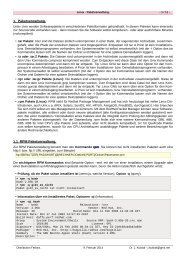
![Parameterdarstellungen [ x(t), y(t) ] Eberhard ... - home . snafu . de](https://img.yumpu.com/22517728/1/184x260/parameterdarstellungen-xt-yt-eberhard-home-snafu-de.jpg?quality=85)
